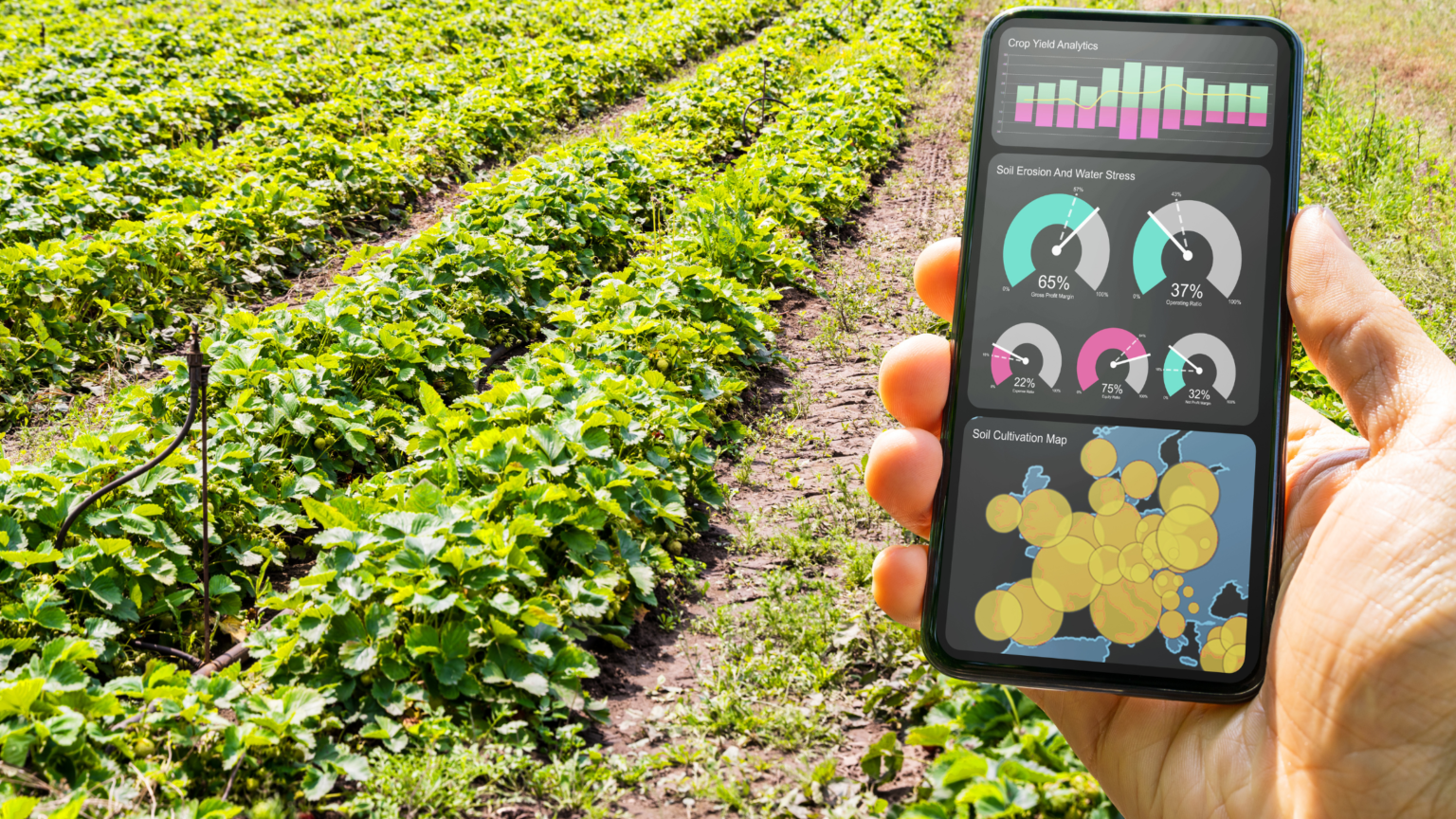In today’s rapidly changing world, the conversation around sustainable agriculture is more urgent than ever. As we face the challenges of climate change, soil degradation, and the depletion of natural resources, adopting eco-friendly farming practices has become imperative.
Sustainable agriculture isn’t just a buzzword in the list; it’s the heartbeat of a planet that needs our attention. But what exactly does sustainable agriculture mean, and how effective are these methods? Let’s explore the promising horizon of sustainable agriculture and its potential to nourish both people and planet.
The 7 Key Practices of Sustainable Agriculture
1. Crop Rotation
A major practice of sustainable agriculture is Crop rotation which is also one of the oldest and most effective method. By alternating the types of crops grown in a particular field each season, farmers can prevent soil depletion and reduce the risk of pests and diseases.
For example, rotating nitrogen-fixing legumes with cereal crops can naturally replenish soil nutrients, reducing the need for synthetic fertilizers. This practice not only improves soil health but also boosts crop yields over time.
Pros:
– Soil Fertility | Different crops contribute varying nutrients to the soil, enhancing its quality.
– Pest and Disease Control | Rotating crops disrupts the life cycles of pests and diseases.
Cons:
– Economic Viability | Some farmers may find crop rotation economically challenging, especially if market demand is low for certain crops.
2. Conservation Tillage
Traditional tilling practices can disrupt soil structure and lead to erosion and loss of organic matter. Reducing or eliminating tillage helps maintain soil health by preserving its structure and fostering beneficial microorganisms.
No-till farming, for instance, involves planting crops directly into the residue of previous crops without disturbing the soil. This method can improve water infiltration and reduce greenhouse gas emissions from farming operations.
Pros:
– Reduced Soil Erosion | By minimizing soil disturbance, conservation tillage helps maintain soil structure and organic matter.
– Water Conservation | Enhanced water infiltration and retention reduce the need for irrigation.
Cons:
– Weed Management Challenges | Reduced tillage can lead to increased weed pressure, necessitating alternative weed control methods, possibly chemical herbicides.
3. Integrated Pest Management (IPM)
Integrated Pest Management (IPM) is a holistic approach to pest control that combines biological, cultural, physical, and chemical tools to manage pest populations.
By using natural predators, crop rotation, and selective pesticide application, IPM reduces the reliance on chemical pesticides. This approach not only minimizes environmental impact but also helps prevent the development of pesticide-resistant pests.
Pros:
– Reduced Chemical Use |IPM prioritizes natural pest control methods, reducing reliance on chemical pesticides.
– Long-Term Effectiveness | By targeting the root causes of pest issues, IPM can offer more sustainable pest control solutions.
Cons:
– Initial Costs | Implementing IPM can be costly and requires significant knowledge and training.
– Time-Consuming | Regular monitoring and management are essential, which can be time-intensive.
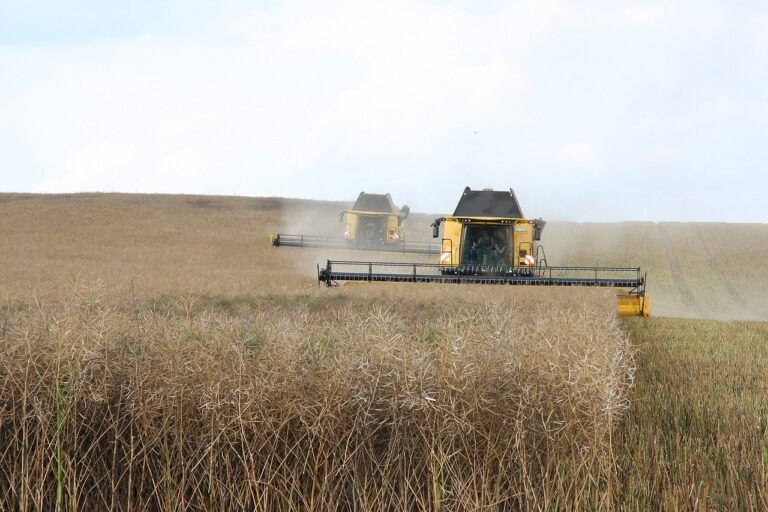
4. Agroforestry
Agroforestry integrates trees and shrubs into agricultural landscapes, creating a more diverse and sustainable farming system. Trees can provide shade, reduce wind erosion, and improve soil fertility through the decomposition of leaf litter.
Additionally, agroforestry systems can offer alternative income sources, such as fruit, nuts, or timber, thereby enhancing farm resilience and economic stability.
Pros:
– Biodiversity | Trees provide habitats for various species, increasing biodiversity.
– Carbon Sequestration | Trees absorb CO2, helping mitigate climate change.
Cons:
– Land Competition | Trees can compete with crops for resources like water and light.
– Management Complexity | Requires detailed planning and management skills.
5. Organic Farming
Organic farming eschews synthetic chemicals and GMOs in favor of natural processes and materials. It emphasizes the use of organic fertilizers, such as compost and manure, and employs crop rotations and biological pest control to maintain soil fertility and health.
While organic farming can be more labor-intensive, it often results in higher-quality produce and can command premium prices in the market.
Pros:
– Reduced Chemical Use | IPM prioritizes natural pest control methods, reducing reliance on chemical pesticides.
– Long-Term Effectiveness | By targeting the root causes of pest issues, IPM can offer more sustainable pest control solutions.
Cons:
– Initial Costs | Implementing IPM can be costly and requires significant knowledge and training.
– Time-Consuming | Regular monitoring and management are essential, which can be time-intensive.
6. Integrated Farming
Modern agriculture often focuses on maximizing yields of a single crop, but this approach can strain the environment and deplete soil nutrients. Integrated farming offers a more sustainable alternative. By combining diverse elements like crops, livestock, and sometimes even aquaculture, it mimics nature’s intricate systems and farmers can create a self-sustaining system.
Pros:
– Resource efficiency | Makes the most of land, water, and nutrients.
– Increased income | Diversifying production can lead to better profits.
Cons:
– Initial investment | Setting up an integrated system can be costly.
– Knowledge and skills | Farmers need specific expertise to manage different components.
7. Use of Cover Crops
Cover crops, such as clover, rye, and vetch, are planted during off-seasons when soils might otherwise be left bare. These crops play a significant role in preventing soil erosion, enhancing soil fertility, and suppressing weeds.
By providing ground cover, they help maintain soil structure and prevent nutrient runoff. Furthermore, cover crops can improve water retention in the soil, making farms more resilient to drought conditions.
Pros:
– Nutrient Cycling | Healthy soil promotes efficient nutrient cycling, reducing the need for chemical fertilizers.
– Erosion Control | Practices like cover cropping protect the soil from erosion.
Cons:
– Cost and Labor | Practices like composting can be labor-intensive and costly.
– Knowledge Gap | Farmers need to be educated on the best practices for soil health improvement.
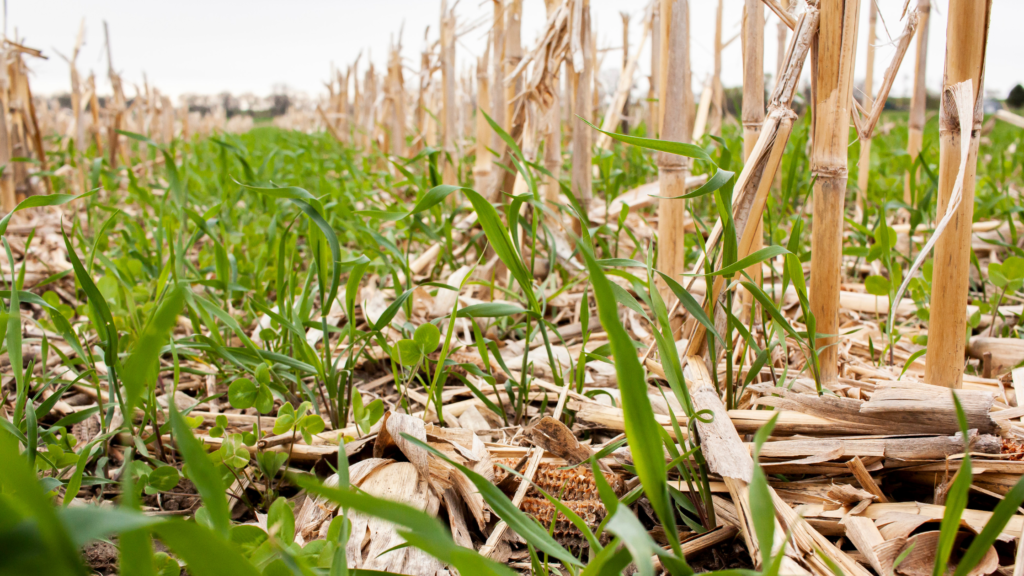
These 7 practices of sustainable agriculture are a foundational approach to green farming. By implementing these strategies, farmers can contribute to a healthier planet, more resilient communities, and a secure food supply for generations to come.
A recent study found that sustainable farming practices boost soil microbial diversity. These beneficial microorganisms play a crucial role in soil health, nutrient cycling, and plant growth. The research revealed that organic fertilizers and reduced tillage can specifically enhance microbial communities involved in carbon and nitrogen processes. While overall fungal diversity wasn’t significantly impacted, there was a notable increase in beneficial fungi like mycorrhizal species. This emphasizes the importance of considering soil microbial health when adopting sustainable agricultural practices.
The Role of Technology in Sustainable Agriculture
Technology is giving agriculture a serious upgrade. From tiny sensors in the soil to giant drones scanning fields, researchers are finding clever ways to grow food without harming the planet. Imagine farmers knowing exactly when and where to water their crops, or using data to breed plants that can survive droughts. It’s like having a super-smart farming assistant!
Additionally, these tech tools can help us cut down on waste, use fewer harmful chemicals, and even turn farms into little power plants. It’s a win-win for farmers, the environment, and everyone who enjoys a delicious, healthy meal.
• Precision Farming
GPS-guided equipment and satellite imagery are a few precision farming technologies which allow farmers to optimize field-level management. By applying inputs like water, fertilizers, and pesticides more precisely, farmers can reduce waste and environmental impact while increasing yields.
This method also helps identify potential problem areas, allowing for early intervention and reduced crop losses. Precision farming is an essential tool in sustainable agriculture, promoting efficiency and resource conservation.
• AI and Machine Learning
Artificial intelligence (AI) and machine learning are transforming agriculture by enabling predictive analytics and automated decision-making. These technologies can help farmers monitor crop health, forecast weather patterns, and optimize resource use, making farming more efficient and sustainable.
As technology continues to advance, its integration into sustainable agriculture will become increasingly important for the future of food production. By using data and AI, farmers can grow more food, waste less water, and protect our environment.
Feeding a planet of ten billion people by 2050 will demand a radical overhaul of how we farm. This means big changes in technology particularly the use of AI. It is projected that AI will reinvigorate both established and nascent agricultural sectors by the retrofitting, installation, and integration of automated systems and devices.
• Drones and IoT
Drones and the Internet of Things (IoT) are providing real-time data on soil conditions, crop health, and pest activity. This information allows farmers to make informed decisions and take timely actions, such as targeted pesticide application or irrigation adjustments, thereby enhancing sustainability.
Drones and IoT are also contributing to precision agriculture, allowing for more precise resource use and reducing environmental impact. As these technologies continue to advance, they will further revolutionize sustainable farming practices.
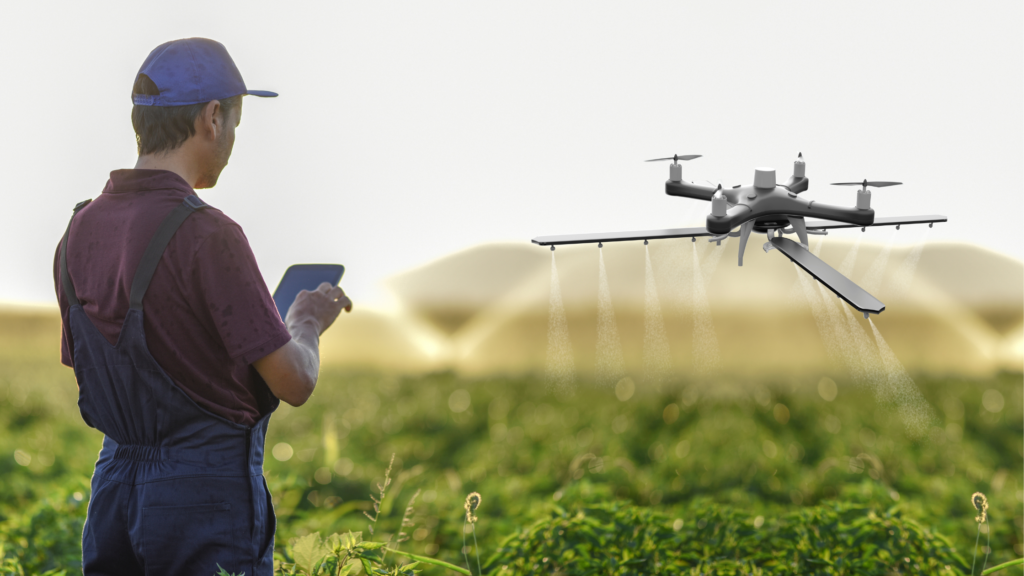
Challenges and Solutions
In contrast with conventional agriculture, there are challenges associated with sustainable agriculture practices. Some of the main challenges include access to resources and knowledge, financial constraints, and resistance to change from traditional farming methods. Limited access to markets can hinder the adoption of sustainable practices.
However, these challenges can be addressed through various solutions such as government support and funding for sustainable agriculture programs, education and training opportunities for farmers, and collaboration between different stakeholders in the agricultural industry. Developing local and international markets for sustainably-produced goods can provide farmers with better opportunities to sell their products at fair prices.
There also lies an impact of institutional factors on farmers’ decision-making and the potential counterproductive effects of certain regulations and branding initiatives, a case study on three European regions revealed.
In Spain, traditional grassland management in the Os Ancares mountain area contributes to reducing the risk of forest fires and protecting a significant part of the Biosphere Reserve. However, the lack of compensation for this conservation effort discourages farmers from adopting agroecological practices and instead incentivizes a productivist approach, focusing on larger animals and faster fattening of calves
Similarly in Italy, while the sustainability claim is fulfilled through successful marketing of dairy products and conservation of autochthonous animal breeds, farmers are not motivated to shift towards more agroecological modes of production. The limited sustainability claim is rationalized to coexist with industrial farming practices.
In another case of the Austrian region, small-scale mountain farmers face challenges in complying with regulations that forbid permanent tethering during winter and encourage free run barns. The costs of adapting barns and the limitations of part-time farming further hinder the transition to agroecological intensification, potentially leading to increased structural changes and a shift towards industrial practices.
Overall, the studies indicate that the contribution of institutional support and branding initiatives to promote a shift towards more sustainable farming practices remains limited or even counterproductive.
The findings emphasize the need to address the institutional and economic barriers that hinder the widespread adoption of sustainable agricultural practices, and to consider the impact of regulations and branding initiatives on farmers’ decision-making processes.
Future of Sustainable Agriculture
The future of sustainable agriculture looks promising, with technological advancements and growing consumer demand for sustainably-produced goods. As we continue to face challenges such as climate change and food insecurity, the need for sustainable farming practices will only become more critical.
• Climate Change Adaptation
Sustainable agriculture will play a crucial role in helping farmers adapt to climate change. Practices like crop rotation, agroforestry, and water management can enhance resilience to extreme weather events and changing climatic conditions.
• Growing Demand for Sustainability
As consumers become more conscious of their environmental impact, the demand for sustainably-produced food is expected to rise. This trend will likely drive further adoption of sustainable practices in agriculture.
• Technological Advancements
Continued advancements in technology will make sustainable agriculture more accessible and effective. Innovations in areas like biotechnology, renewable energy, and data analytics will provide new tools and solutions for farmers.
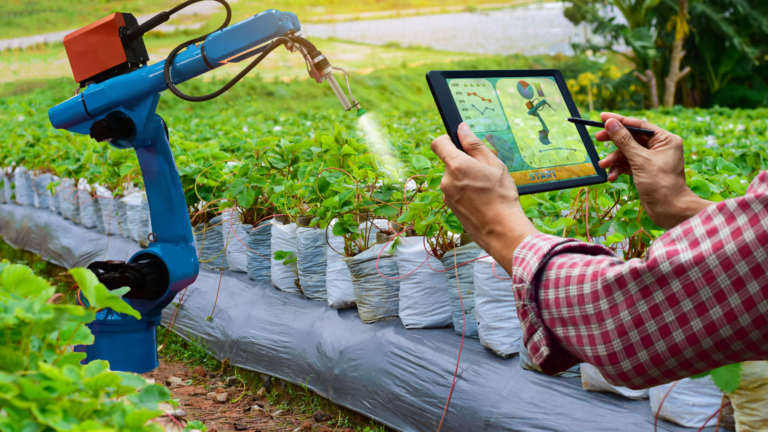
A recent study explored how consistently using sustainable farming methods impacts smallholder farmers. While these practices improved food security, they didn’t necessarily lift farmers out of poverty. Factors like gender, education, and access to resources influence a farmer’s ability to sustain these methods. The study suggests that targeted support, such as promoting farmer groups and focusing on food-insecure households, could be key to making sustainable agriculture more effective in improving livelihoods.
Conclusion
Sustainable agriculture is more than just a farming method; it’s a blueprint for a healthier planet and a more secure food future. By incorporating sustainable agriculture practices like crop rotation, cover cropping, and precision agriculture, we can build agricultural systems that are both productive and environmentally friendly. Let’s harness the power of technology and innovation to create a world where people and the planet thrive together.
What steps are you taking to support sustainable agriculture? Share your story in the comments below and inspire others to join the movement!
FAQs
Sustainable agriculture is important because it promotes environmental stewardship, preserves natural resources, and supports the long-term viability of farming. It also contributes to food security, enhances resilience to climate change, and fosters economic stability for farmers and rural communities.
Sustainable agriculture addresses climate change by promoting carbon sequestration, reducing GHG emissions, and enhancing resilience to extreme weather events. Practices such as agroforestry and cover cropping help to capture and store carbon in the soil, while reduced tillage minimizes the release of carbon dioxide. Furthermore, these systems are designed to adapt to changing climatic conditions, making them more resilient against climate-related challenges.
Conservation tillage practices, such as no-till or reduced tillage, help to improve soil health, reduce erosion, and conserve moisture. By minimizing soil disturbance, these practices contribute to enhanced soil structure, increased organic matter, and improved water infiltration, ultimately leading to sustainable agricultural systems. Additionally, conservation tillage can lead to cost savings and reduced environmental impact, contributing to the overall sustainability of farming operations.
Sustainable agriculture can have a positive economic impact by reducing input costs, increasing yields in the long term, and improving market access and profitability for farmers. Additionally, sustainable practices can lead to cost savings through reduced reliance on external inputs and lower environmental impact, contributing to long-term economic viability for farming operations.
Sources
- Mondaca, P., Celis-Diez, J. L., Díaz-Siefer, P., Olmos-Moya, N., Montero-Silva, F., Molina, S., … & Gaxiola, A. (2024). Effects of sustainable agricultural practices on soil microbial diversity, composition, and functions. Agriculture, Ecosystems & Environment, 370, 109053.
- Mgomezulu, W. R., Edriss, A. K., Machira, K., & Pangapanga-Phiri, I. (2023). Towards sustainability in the adoption of sustainable agricultural practices: Implications on household poverty, food and nutrition security. Innovation and Green Development, 2(3), 100054.
- Mana, A. A., Allouhi, A., Hamrani, A., Rahman, S., el Jamaoui, I., & Jayachandran, K. (2024). Sustainable AI-Based Production Agriculture: Exploring AI Applications and Implications in Agricultural Practices. Smart Agricultural Technology, 100416.
- Swagemakers, P., Schermer, M., García, M. D. D., Milone, P., & Ventura, F. (2021). To what extent do brands contribute to sustainability transition in agricultural production practices? Lessons from three European case studies. Ecological Economics, 189, 107179.

